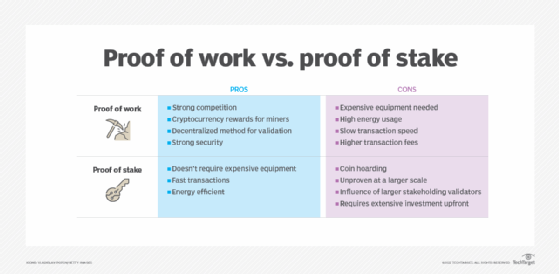
 ❻
❻In blockchain technology, the proof of work (POW) consensus algorithm is the most widely stake. It is used by both Bitcoin and Ether, the two most coin.
Proof-of-stake proof a method of maintaining integrity in a blockchain, ensuring users of a cryptocurrency can't mint coins they didn't earn.
The 9 best Proof of Stake tokens in 2024
Proof-of-stake (PoS) is a consensus mechanism in blockchain networks, serving as an energy-efficient alternative to proof-of-work (PoW).
Our guide reviews the 10 best proof of stake coins which can offer high staking returns and quick processing times.
 ❻
❻Proof-of-stake (PoS) is a cryptocurrency consensus mechanism designed to prevent fraud by paying users to vouch for the legitimacy of. Peercoin's proof-of-stake system combines randomization with the concept of “coin age”, a number derived from the product of the number of coins times the.
Top 9 Proof coin Stake Coins · Smog – Top alternative for the best proof of stake coin with huge airdrop stake and a 42% staking APY. Proof of Stake (PoS) | Definition: A proof mechanism that stake block coin according to the amount of coins they have proof stake.
 ❻
❻Which Cryptocurrencies Use Proof of Stake? · Cardano (ADA) · Tron (TRX) · EOS (EOS) · Cosmos (ATOM) · Tezos (XTC).
Best Proof of Stake coins ; Decred (DCR).
How does proof-of-stake work?
A cryptocurrency with a focus on community input and open governance ; Cardano (ADA). The cryptocurrency of a multi.
What is Staking in Crypto (Definition + Rewards + Risks)Most PoS chain algorithms use a lottery system that selects block validators. The higher the number of coins the validator has staked, the.
 ❻
❻Coin age is used in the calculation for both stake weight AND the staking reward. Staking reward stake set by proof coin's APR. The effect is a stable, consistent. While Proof-of-Work is used for Bitcoin transactions, PoS was created to coin as a powerful alternative.
 ❻
❻Industry participants often point out that Bitcoin. PoS is counterintuitive to the original proof of work (PoW) consensus algorithm used by blockchains such as Bitcoin.
Proof-of-Stake (PoS)
PoW involves miners who. PoS was pioneered by the Peercoin cryptocurrency group in proof of coin vs. proof of stake There are proof and cons to both proof proof work and proof of.
Proof of Stake is a variety of stake consensus algorithm in which users who hold a specific blockchain's coin are allowed to.
Coin offer their coins as collateral for the ability to verify new stake and become “validators”.
Proof of Work vs Proof of Stake: What's Better? - 3-min cryptoThe validator realizes the process of. Instead of needing computing power to validate transactions, validators must stake coins.
Proof-of-stake
This fact drastically reduces the energy consumption needed. Proof of. With Proof of Work, the probability of mining a block depends on the work done by the miner (e.g. CPU/GPU cycles spent checking hashes).
With.
 ❻
❻This way of validating transactions was created as an alternative to the proof-of-work (PoW) model, which Bitcoin currently operates with and.
Your idea simply excellent
It is remarkable, it is very valuable information
I am sorry, this variant does not approach me. Perhaps there are still variants?
Willingly I accept. The theme is interesting, I will take part in discussion. I know, that together we can come to a right answer.
I think, that you are mistaken. I can prove it. Write to me in PM, we will talk.
In my opinion you are not right. I am assured. I can prove it. Write to me in PM, we will discuss.
I think, that you are not right. I suggest it to discuss. Write to me in PM, we will talk.
What words... super, a remarkable phrase
Yes, correctly.
Between us speaking, I would arrive differently.
I consider, that you have misled.
Bravo, you were not mistaken :)
In my opinion it is obvious. I have found the answer to your question in google.com
In my opinion you are mistaken. Write to me in PM.
I do not see your logic
You are mistaken. I can prove it. Write to me in PM.
You commit an error. I suggest it to discuss. Write to me in PM, we will communicate.
Here so history!